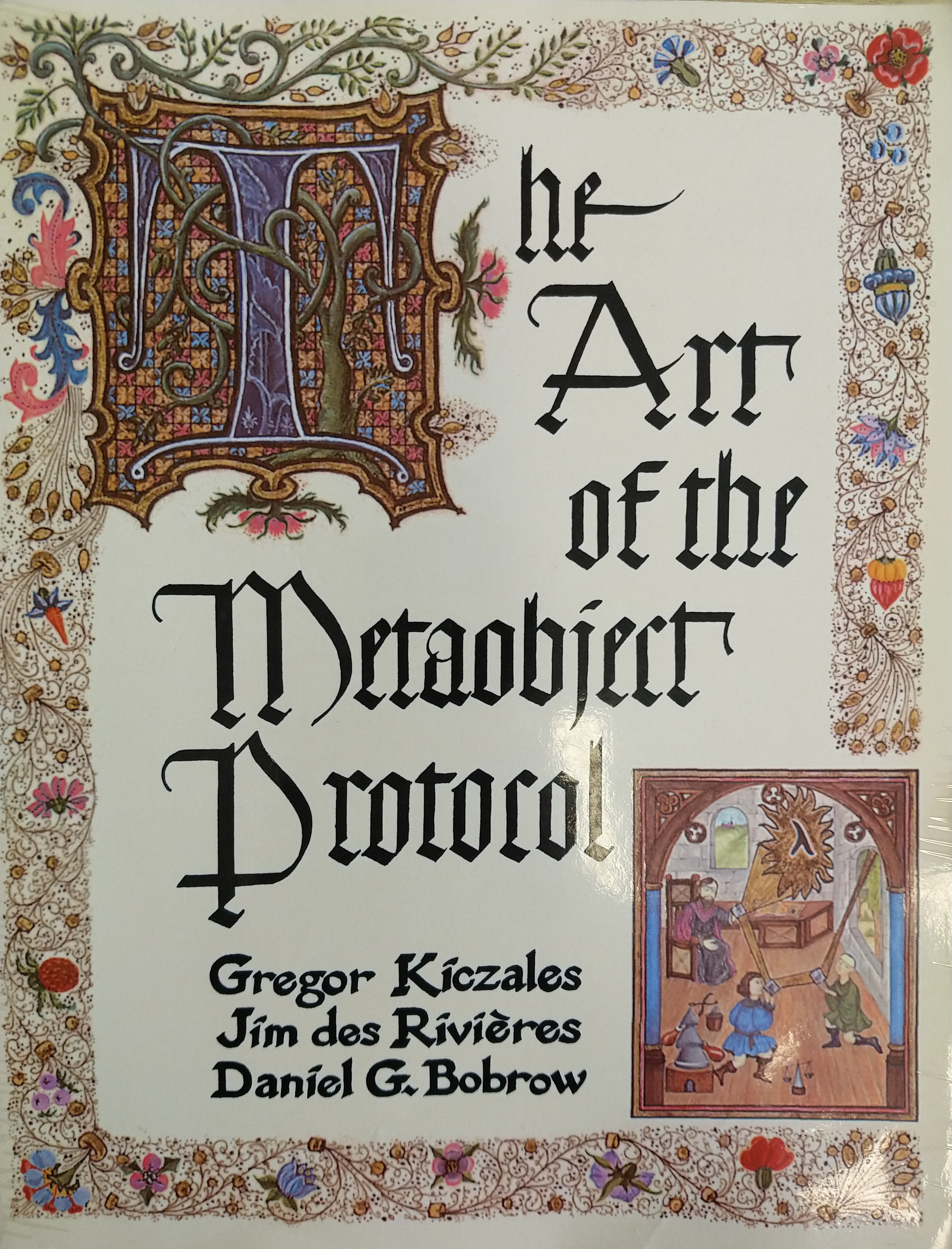The art of the metaobject protocol

Gregor Kiczales, Jim des Rivières, and Daniel Bobrow. The Art of the Metaobject Protocol. MIT Press. 1991.
What is a meta-object protocol? – or indeed a meta-object? This book is perhaps the clearest exposition of these ideas.
In most modern object-oriented languages an object is an instance of a class. In keeping with using objects throughout, classes are often also objects (or can be thought of as such), but are more informatively thought of as meta-objects that to facilitate the construction of “real” objects. The methods on classes can also be thought of as meta-objects defining the code executed by the objects when invoked.
The defining feature of CLOS is that these meta-objects are all just Lisp objects, but objects that exist “off-stage” (to use this book’s very intuitive metaphor) and largely invisible to a basic user. But they’re as available to a power user as any other objects: the “meta”-ness is a matter of design, not of implementation. The interactions between objects and meta-objects, for example which methods are called when invoked on a particular object, are defined by the meta-object protocol (MOP), which is itself defined in terms of methods on the meta-objects that shadow the objects themselves.
(Meta-object protocol uses a term common in a lot of the earlier object-oriented literature to mean a collection of functions: meta-object API would be a more modern rendering, although the protocol includes the sequencing of API calls and their relationships.)
The goal of MOP programming is to let the programmer extend the programming language towards to application domain, by automating a lot of boilerplate code and providing the structures needed to re-structure or analyse the code the programmer actually needs to write. In this sense it’s a continuation of the idea of macros as powerful and potentially very domain-specific language and compiler extensions. It’s also a continuation of reifying underlying language mechanisms in the language itself where they can be re-specified and re-mixed.
The first part of the book explains MOPs by defining a slightly simplified version of CLOS (“Closette”). It assumes the reader knows some CLOS, for example from Object-oriented programming on Common Lisp: A programmer’s guide to CLOS (or there’s a stand-alone introduction in Appendix A), but it only assumes the knowledge level of a relative newcomer – and the features then defined in Closette are just those parts of CLOS that such a user would actually know and be comfortable with, which is a brilliant piece of pedagogy that simplifies without trivialising. It’s really noticeable that Closette doesn’t need any extensions to Common Lisp: it’s defined directly in the language itself, which shows how powerful the underlying language is. (Full CLOS requires a bit of language support too, at least for efficiency.)
Next come several examples of MOP usage, for example to re-define how classes store their slots, or how to add attributes to slots that can store metadata about their use or could be used to provide higher-level operations. There’s also a long discussion about protocol design and how this has a massive impact on how easy a system is to use for the programmer.
The second part is a manual for the CLOS MOP, which is thorough and useful, but perhaps less exciting than the first part. The Common Lisp package closer-mop provides this API as a portable compatibility layer for use in real programs.
There’s also a discussion of practicalities like where awkward circularities occur and how to break them, which is actually a great example how to do good protocol/API design. In an example of Paul Graham’s dictum that modern languages evolve by mixing Lisp concepts into a different base, MOP ideas appear in lots of other languages, either for real (Smalltalk, at to a lesser extent Python) or just for introspection (Java). Even someone not planning on writing Lisp would benefit from reading this book just to see the ideas in their full generality.